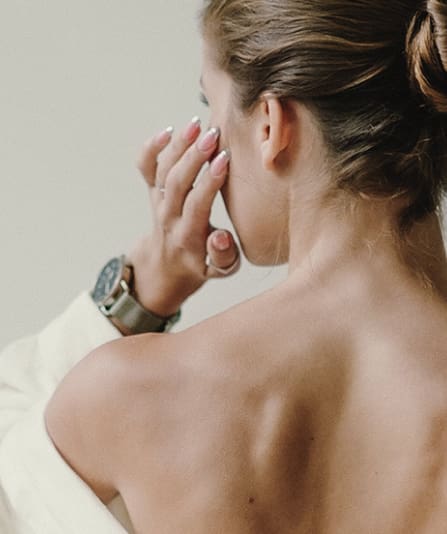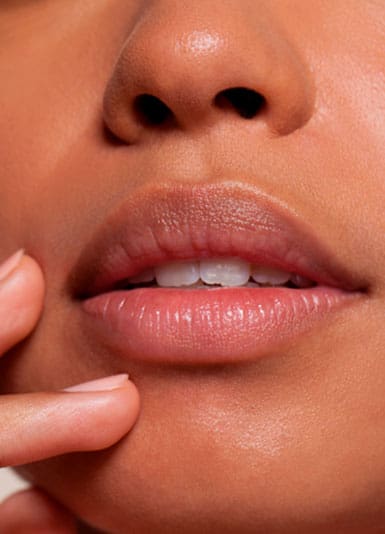Fat transfer is a minimally invasive treatment, so carries fewer risks than other surgical treatments. As with every procedure, there are risks of infection, bleeding, swelling and mild discomfort following the procedure. These risks are reduced with the use of high end equipment, an experienced practitioner and meticulous aftercare. Sometimes fat transfer may result in some contour irregularities, which tend to be temporary. There may also be a very small risk of nerve or blood vessel damage depending on where the target area is. All of these risks should be discussed with you in full prior to undergoing any procedure.
Scars & Burns by Mr Ioannis Goutos
Fat Transfer For Scars

At a glance
Treatment time:
30-60 minutes, depending on the site and type of scar/area being treated.
Duration:
May require repeated treatments to achieve the desired effect.
Return to work:
Usually no delay.
Anaesthetic:
Local anaesthetic but sedation may be required in certain cases.
Fat transfer is a surgical procedure used to improve the appearance of scar depressions in various bodily parts; this is most commonly a result of trauma, acne as well as infections like chickenpox. It involves removing fat from one part of the body and after processing, injection of a small quantity under the skin.
It is most commonly undertaken alongside subcision for tethered, dipped scars. As a result, the treated skin becomes plumpier, more even and scars appear less prominent. Fat transfer is a commonly performed surgical procedure within an outpatient appointment under local anaesthetic but in certain cases needs a daycase sedation setting.
Mr Ioannis Goutos is an expert plastic surgeon with a special interest in both the academic and clinical field of scars and burns. He is in a position to offer consultations and assessments for a number of surgical and non-surgical procedures. Mr Goutos takes special pride in considering all relevant factors for each individual, such as their exact concerns, medical history, treatment goals and personal preferences, to create tailored treatment plans.
Book your consultation today
Book nowWhat is Fat Transfer For Scars?
Fat transfer is classed as a surgical procedure, however it is short and can be done during an outpatient appointment with only local anaesthetic in most cases. This means that there is minimal downtime following fat transfer, hence you can return to work the following day. Fat transfer can give good results in addressing:
- Atrophic scarring from trauma, acne or surgery
- Tethered scarring from acne breakouts or chicken pox infections
- Skin graft scars from reconstruction of wounds
It is important that before you undergo this procedure, there is no active infection or inflammation present in the skin.
Following assessment, typically, an experienced clinician will clean the target scar as well as the area of fat harvest with an antiseptic solution. The field is then infiltrated with a local anaesthetic solution, which works to make the area numb within a few minutes. You may feel some pressure during the procedure, but you should not feel any sharp pain. After the fat has been collected and processed, a specialised, needle is then inserted under the scar and fat is injected in a fan-like pattern. This technique ensures that small quantities of fat are deposited in the tisssues under the scar. Scar subcision is most frequently performed just before fat transfer; this serves to release any fibrous bands tethering the undersurface of the skin. Multiple incisions may be necessary to treat larger and more complex scars. The injected fat has two main functions; one is to act as a filler material preventing the reattachment of the undersurface of the scar to the deeper tissues. The second relates to the fact that fat cells contain a large number of stem cells; these are dormant cells, which upon activation are responsible for the improvement of long term scar quality.
Following fat transfer, you may have some mild discomfort, brusing and swelling which should reduce within a few days. Regular pain killers can be helpful to improve the discomfort; nevertheless most patients find the recovery to be straightforward and not requiring any medication at all.


Frequently Asked Questions about Fat Transfer For Scars
We know having medical, surgical or cosmetic treatment can seem daunting and it is natural to have questions. We are here to ensure your comfort and safety at all times. If you are unable to find the answer to your questions below, then please do not hesitate to contact us so we can help.
Although you can expect to see improvement following one session, most individuals require one repeat session to get the optimal final results. It is recommended to allow at least 6 months between treatments to allow the skin to heal and to fully appreciate the response to the treatment.
Most people will have visible and positive results after the first treatment with an improvement in the contour of the area; in other words, it should appear ‘plumper’, smoother and more even with the surrounding skin.
Subcision can be used in conjunction with other procedures, such as needling, laser treatments or fat transfer, in order to achieve the desired result. It is also recommended to consult with an experienced practitioner who will be able to assess your skin, any problem areas you might have and consider your cosmetic goals before suggested an appropriate treatment plan, which may include a number of different procedures.
How much does Fat Transfer For Scars cost in London?
Starting from £ 2000
At Goutos London, we aim to deliver a premium service with no compromise on quality in order to deliver the best results possible for your needs.

Conditions Fat Transfer For Scars can treat
Whatever your condition, and whatever your health goals are, we will ensure you get a holistic, focused and bespoke service that offers you the safest options for treatment aiming for the best possible outcome.
Testimonials
Mr Goutos is delighted to share some of his patient and peer feedback on their experiences of his services.














